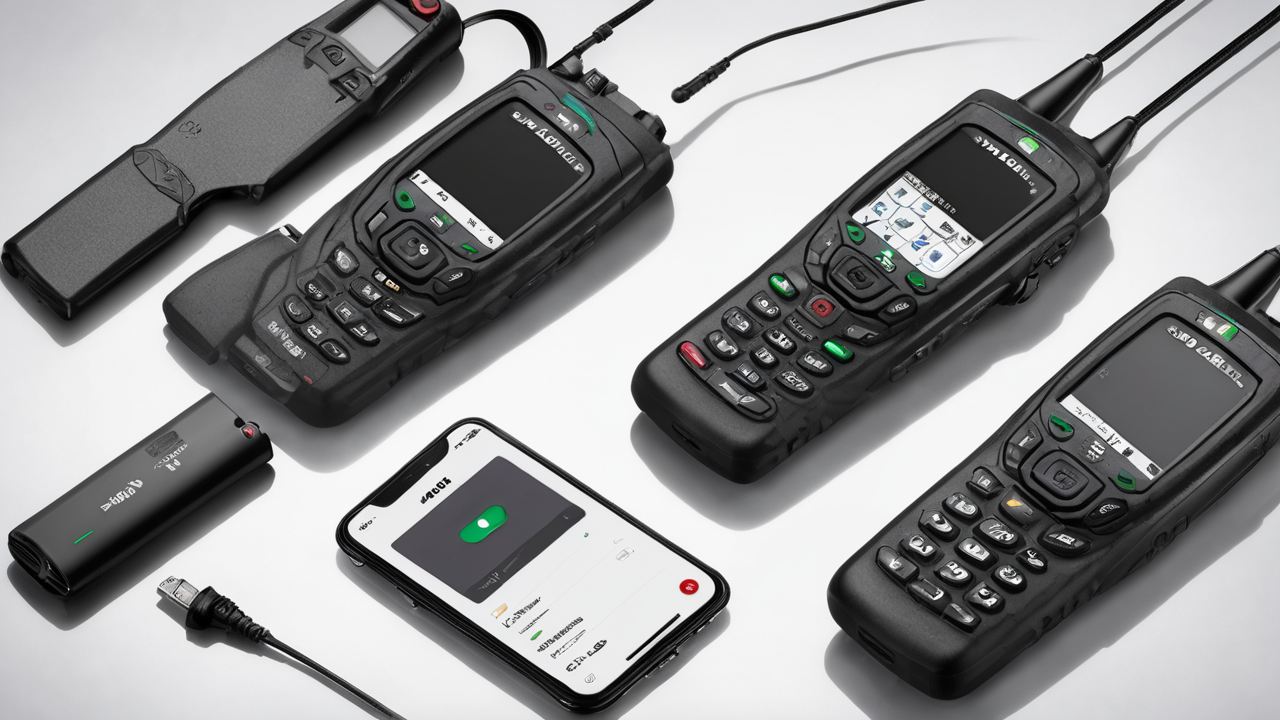Understanding the Basics of Walkie Talkies
What Is a Walkie Talkie?
A walkie talkie is a portable two-way radio. It allows users to communicate over short distances. These devices are handheld and battery-powered. They work without cell networks or internet. Walkie talkies use radio waves to send and receive messages. They're popular for outdoor activities and emergencies. Most models have a push-to-talk button. This lets users speak to others on the same channel. Walkie talkies are simple to use and reliable. They're a great tool when other communication methods fail.

Key Features of Top-Performing Walkie Talkies
The best walkie talkies have several important features. A long range is crucial for outdoor use. Many top models can reach up to 35 miles in ideal conditions. Battery life is another key factor. Look for devices that last 10-12 hours on a single charge. Water resistance is important for outdoor use. The best models have an IPX rating of 4 or higher. Clear audio quality ensures messages are understood. Advanced noise-canceling tech helps in loud environments. Multiple channels allow for private conversations. Some models offer privacy codes for extra security. Durability is vital for Emergency use. Look for rugged designs that can withstand drops and harsh weather.
Expert Reviews of the Best Walkie Talkies
Assessing Durability and Reliability
Experts agree that durability is crucial for the best walkie talkies. Top models use strong materials like reinforced plastic or rubber. This helps them survive drops and impacts. Many have shock-absorbing features. These protect internal components. Water resistance is a key factor in reliability. The best devices work well in rain or snow. Some can even float if dropped in water. Battery life is another aspect of reliability. Long-lasting batteries ensure the device works when needed. Experts test walkie talkies in various conditions. They look for consistent performance in heat, cold, and humidity. The most reliable models work well in all situations.

Comparing Range and Battery Life
Range and battery life are top priorities for walkie talkie users. Experts test these features thoroughly. The best models offer a range of 25-35 miles in open areas. However, real-world range is often less due to obstacles. Urban areas may limit range to 1-2 miles. Battery life varies widely between models. Top performers last 10-12 hours on a single charge. Some offer rechargeable batteries, while others use disposable ones. Experts recommend models with both options. This provides flexibility in different situations. Many users prefer rechargeable batteries for regular use. Disposable batteries are good for emergencies or long trips.
Analyzing Ease of Use and Design
User-friendly design is crucial for the best walkie talkies. Experts look for intuitive controls and clear displays. Large buttons are important for use with gloves. Backlit screens help in low light conditions. Simple menus make it easy to change settings. Some models offer voice activation for hands-free use. This is helpful during activities like climbing or skiing. Compact size and lightweight design are also important. The best walkie talkies are easy to carry and use for long periods. Some models clip onto clothing or gear. This keeps them accessible but out of the way. Experts also consider the learning curve for new users. The best devices are easy to set up and use right away.
Selecting the Right Walkie Talkie for Your Needs
The Importance of Tailored Features
Choosing the right walkie talkie depends on your specific needs. Consider where and how you'll use the device. For hiking, long range and durability are key. Urban users might prioritize compact size and clear audio. Emergency preparedness kits need reliable, long-lasting models. Some features are useful in specific situations. Weather alerts are great for outdoor enthusiasts. Hands-free operation helps during active sports. Privacy codes are important for crowded areas or sensitive communications. Think about group size when selecting channels. More channels allow larger groups to communicate easily. Some models offer Bluetooth connectivity. This can be useful for integrating with other devices.

Walkie Talkies in Different Price Ranges
Walkie talkies come in a wide range of prices. Budget models start around $20-$30 for a pair. These offer basic features and shorter range. Mid-range options cost $50-$100 per pair. They provide better range and more features. High-end models can cost $200 or more for a pair. These offer the best performance and durability. Budget models are good for casual use or kids. Mid-range options suit most outdoor enthusiasts. High-end models are ideal for professional use or serious outdoors people. Consider how often you'll use the walkie talkies. Frequent users benefit from investing in higher-quality models. Occasional users might be happy with more affordable options.
Legal Considerations in the United States
In the US, walkie talkie use is regulated by the FCC. Most consumer models use the Family Radio Service (FRS) band. These don't require a license to operate. Some more powerful models use the General Mobile Radio Service (GMRS). GMRS requires a license from the FCC. This license covers your entire family. It's valid for 10 years and costs about $70. FRS walkie talkies are limited to 0.5 watts of power. GMRS models can use up to 5 watts, offering longer range. It's important to follow channel restrictions. Some channels are shared between FRS and GMRS. Others are exclusive to one service. Always check local regulations before using walkie talkies. Some areas have restrictions on use in certain locations.


